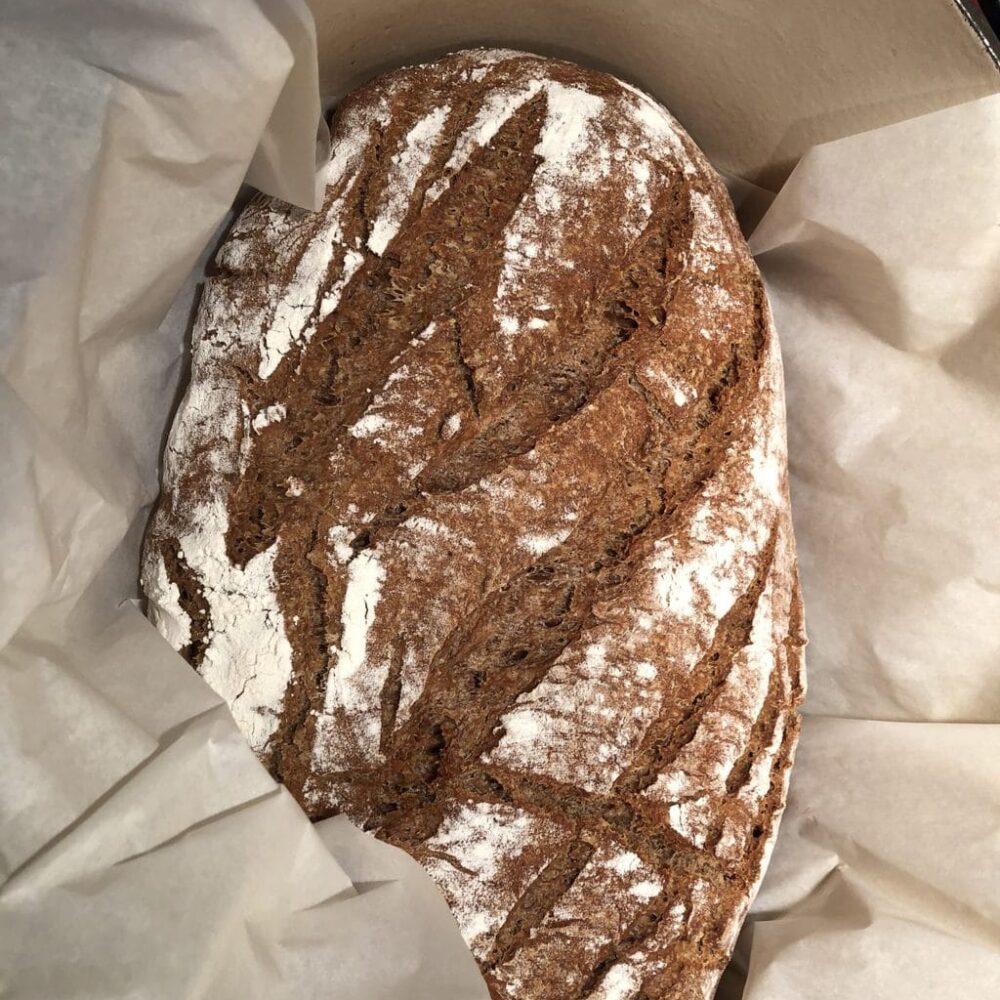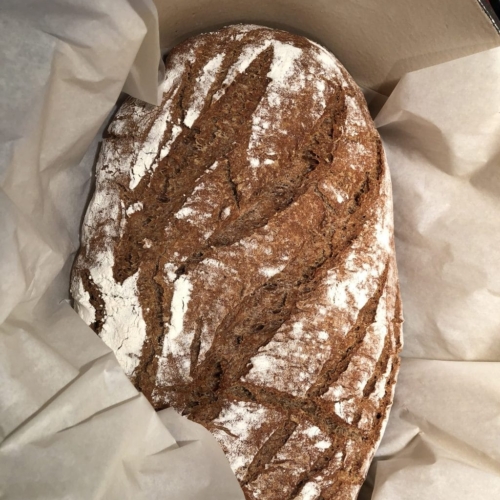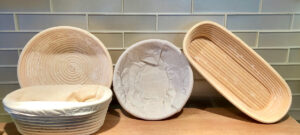

Dad's Hearty Pumpernickel Bread
Dad's Pumpernickel was one of my favorites growing up. Taken warm from the oven, we often broke it open and slathered the piece with fresh sweet butter. The aroma, nutty flavor and chewiness of this wonderful, rich combination of grains filled the senses and the soul. It's actually quite easy to make. Between the ease of instant yeast, and the Dutch Oven acting somewhat like a commercial baker's oven, it's hard to go wrong. Not all stores will carry Pumpernickle or Barley Flour. I can find it online through King Arthur Flour and sometimes through Amazon. Pumpernickle is really coarsely ground rye flour, but it does have a more intense flavor than finely milled rye and definitely adds a nuttier texture.
Equipment
- 1 5 to 6 quart dutch oven
- 1 2 pound size Banneton Proofing Basket
Ingredients
- 4 cup Bread flour (500g)
- 1/2 cup Barley flour (43g)
- 1 cup Dark rye flour (114g)
- 1 cup Pumpernickel flour (114g)
- 1 tbsp Cocoa powder (7g)
- 1 tbsp Salt (17g)
- 2 tsp Instant yeast (7g)
- 1 1/2 tbsp Molasses (29g)
- 1 Large whole egg
- 18 floz Water (532ml)
Instructions
- Add the flours, salt and yeast to the bowl of your stand mixer. Fit the mixer with the dough hook attachment. Sift in the cocoa powder to remove the small lumps. Mix at low speed until all ingredients are combined.
- Mix the molasses and egg with the water and heat to 95 to 100 degrees. Your microwave works best for this.
- Pour the liquid over the flour mixture. If you are using an electric mixer, turn to low speed and mix until the dough clings to the dough hook and comes away cleanly from the sides of the bowl. This should take about 4 or 5 minutes. You may have to stop the machine and scrape down the sides of the bowl during the mixing process.
- **If you are mixing by hand, you might want to start using a wooden spatula to combine the liquid and flour. Once it is mixed, use your hands to knead in to a smooth ball of dough. This should take about 10 minutes.
- Turn the dough out onto a lightly floured work surface and knead for another 5 to 7 minutes. Place the dough in a lightly oiled clean bowl large enough to hold it once it has doubled in size. Cover with plastic wrap, and set in a warm place to rise. It should double in size in 45 minutes to an hour.
- Once it has doubled in size, turn the dough out onto a lightly floured work surface and gently knead for another minute, and form into a ball of dough or a longer loaf shape, depending on the shape of the Bennaton proofing basket you will use. If you want the impression from the reeds, place the dough directly in the basket, if you want smooth sides use the canvas liner. Cover with a light weight tea towel and place in a warm spot to rise. It should almost double in size and this should take about 45 minutes.

- When your bread dough is about 15 minutes in to this second proof, turn on your oven to 400° degrees for Convection bake and 425° degrees for Conventional bake. Place a 5 to 6 quart Dutch oven in the oven to heat.
- When the bread dough has almost doubled in size, take the Dutch oven out of the oven. Gently "dump" the dough onto a large square of parchment paper, pick up the dough by using the 4 corners of the parchment paper as handles, and gently place in the Dutch oven. Put the top back on and return to bake.
- Set your timer for 30 minutes. After 30 minutes remove the cover and continue to bake another 15 minutes. Your bread should be perfectly done by this time. Brown and crusty on the outside, and if you tap the bottom of the loaf it will have a hallow sound. Remove the loaf and place on a cooling rack.